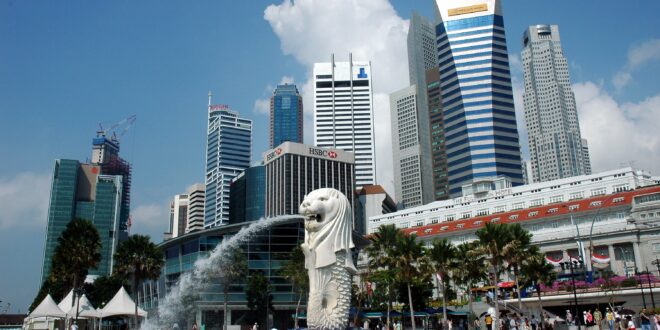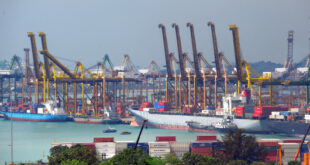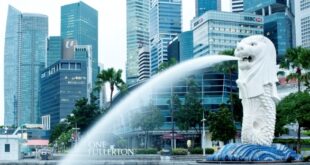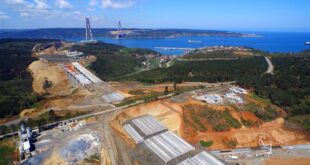Singapore will seek to reduce its reliance on foreign workers and, instead, try to improve the productivity of its own workforce in an effort to restructure its economy, Deputy Prime Minister and Finance Minister Tharman Shanmugaratnam announced on Friday.
FOREIGN WORKER QUOTA CUT
In the first budget speech since a watershed general election in May last year, Tharman announced that the maximum number of foreign workers that manufacturing firms can hire will be reduced to no more than 60 percent of their total workforce from 65 percent previously.
Companies in the services sector now can rely on foreign labor for no more than 45 percent of their total workforce, compared with 50 percent previously.
An estimated 500 manufacturing companies and 8,500 service companies should be affected by the changes.
The finance minister said that a year of slow growth ahead is a good chance to reduce the reliance on foreign labor.
“All firms can then take this into account in their future hiring decisions,” he said.
Overall, the number of S pass holders a company can employ — usually mid-level skilled foreigners — will be capped at 20 percent of its total workforce, down from 25 percent previously.
Companies which hire new foreign workers will not be allowed to exceed the ceilings from July this year, but existing foreign workers will not be affected by the change until June 2014, Tharman said.
“It will take time for these measures to have an effect on businesses’ demand for foreign workers. The foreign workforce has in the meantime grown rapidly, by 7.5 percent per year over the last two years and is now at about one-third of our total workforce,” he said.
REDUCING RELIANCE ON FOREIGN WORKERS
The announcement was in line with the government policy of reducing its reliance on foreign workers in response to concerns voiced by voters in the general election last year.
Some of the voters complained about the growing competition they face from foreign workers and foreign talent in the labor market, while the pressure from the rapidly growing foreign worker population on the public facilities have been a source of complaints, too.
Some have complained in the discussions at the time of the election about seeing too many foreigners on the buses and trains in Singapore. The ruling People’s Action Party took 81 of the 87 seats in the parliament in the elections last year, but its share of popular votes slipped.
Prime Minister Lee Hsien Loong has said that the government will respond to voters’ concerns by reducing its reliance on foreign labor. The government has tightened its criteria at least twice since the general election for employment passes issued to foreigners, including both low-skilled workers and professionals.
Tharman said the government cut the quota for foreign workers in an environment of full employment for Singaporeans and shortage of labor in many sectors of the economy.
“We have no alternative but to slow down the growth of our foreign workforce,” he said.
Singapore relies heavily on foreign labor in sectors of low skills such as construction, catering services as well as domestic helpers.
RAISING PRODUCTIVITY BY 2-3 PCT PER YEAR
The finance minister said the government will invest more resources in raising the productivity of the local workforce, with the long-term goal of growing productivity by 2 to 3 percent a year.
The measures include those aimed at helping older Singaporeans find work. Companies will be encouraged to hire locals, and keep older workers with a wage subsidy for employers hiring workers aged 50 and above.
The government will also invest more resources to help the lower and middle income groups in education, work, housing and healthcare. The lower income group will be given help to acquire skills.
A one-off cash grant will be given to small and medium enterprises, pegged at 5 percent of a company’s revenue for the year 2012.
On the social front, there will be more help for the elderly, disabled and lower income families as the government moves in to address the issue of income inequality.
The government will pump 1.1 billion Singapore dollars (0.87 billion U.S. dollars) to ramp up bus capacity by adding 800 more buses on the roads by 2016.
1.8 BILLION USD BUDGET SURPLUS
The government had a budget surplus of 2.3 billion Singapore dollars (1.8 billion U.S. dollars) for the fiscal year 2011, which is equivalent to about 0.7 percent of the city state’s gross domestic product.
It is much higher than the initial estimate of 100 million Singapore dollars (79.4 million U.S. dollars) and attributable to stronger corporate profits, lower-than-expected claims for capital allowances as well as a sharp increase in stamp duties.
Observers said the budget tries to achieve “immediate gain for the community with initiatives towards long-term gain for businesses.”
“Businesses have been given a clear signal that Singaporeans need to drive future competitiveness and that the government will be co-investing with them to achieve this,” said Adrian Ball, head of tax services at Ernst & Young Solutions LLP.
“Businesses which fall off the productivity and innovation wagon are likely to struggle with rising costs,” said Amy Ang, partner of financial services tax at Ernst & Young Solutions LLP.
 Asia Finance News Asia finance news, banking, market analysis, business, Forex, trade, Cryptocurrency as it is happening in Asia. Trusted gateway for Asian financial news.
Asia Finance News Asia finance news, banking, market analysis, business, Forex, trade, Cryptocurrency as it is happening in Asia. Trusted gateway for Asian financial news.





